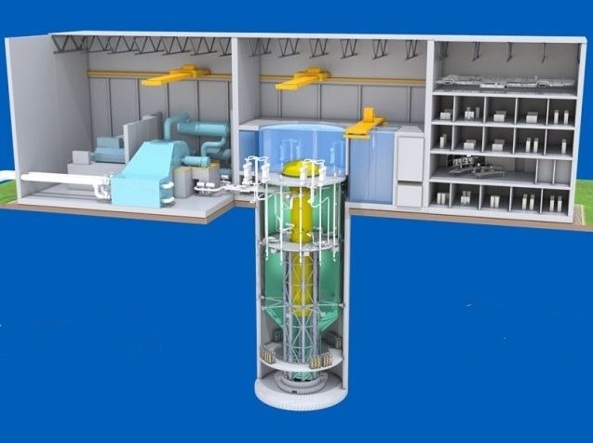Modular nuclear reactors: the most advanced designs are now in direct competition

Several American start-ups are developing small modular reactors (SMRs) to replace outdated traditional nuclear reactors. SMRs are promoted as a cheaper and more efficient option, requiring less fuel and producing less nuclear waste. The US government supports the development of SMRs, with tax credits of up to 30% of investments available through the Inflation Reduction Act. So far, only one SMR project, NuScale of Portland, has been fully certified by the Nuclear Regulatory Commission. Other countries interested in SMR technology look closely to the United States to see what is approved by the NRC. Traditional reactors, now obsolete, currently supply about 18% of American electricity.
In light of what was reported by a recent article in the Economic Times, several American startups are working on building a new generation of small reactors that could push nuclear energy into a new phase, with the support of the US government. During a recent hearing before the House Appropriations Committee, Energy Secretary Jennifer Granholm reaffirmed the "importance of nuclear power" to the current administration in America's energy supply.
Incredibly, despite the Biden administration's stated support for nuclear power, there are no new projects underway for any traditional nuclear reactor. Meanwhile, the current 93 traditional reactors – which supply about 18% of the country's electricity – are aging rapidly; six reactors have already been decommissioned since 2017. The future of the industry will likely rely on small modular reactors (SMRs) similar to those currently powering submarines.
SMRs have been promoted as a cheaper option than traditional reactors, with reduced construction times and less fuel needed to power them, resulting in less nuclear waste. “I've spoken to many utility CEOs and many of them have simply stated that they intend to build SMRs and not large reactors,” says William Freebairn, Senior Managing Editor at S&P Global. Many SMRs will replace coal-fired plants in remote locations, where "the ability to place a large unit is very limited," he added.
While SMR technology has been in development for decades, the momentum is building thanks in part to government impetus and the recent adoption of the Inflation Reduction Act (IRA), which will provide tax credits of up to 30% of investments. Several US companies are currently working on SMR or AMR (Advanced Modular Reactor) projects. Only one, NuScale of Portland, has been fully certified by the Nuclear Regulatory Commission (NRC). The approval was only granted in January of this year, six years after the company filed its application.
"Other countries around the world interested in this technology are watching carefully what happens in the United States and following the example of what has been approved by the NRC," said Bahram Nassersharif, director of the nuclear engineering program at the University of Rhode Island. "It's sort of a stamp of approval that they accept."
NuScale originally projected that its six-module pilot plant would be fully operational by 2026 in Idaho Falls, Idaho, but delays have already pushed the deadline back to 2030. Time is of the essence, with 28 years to go of the operating licenses of the current reactor fleet. Industry must demonstrate that it can build and operate new SMRs on a commercial scale before the end of the decade.
Alongside NuScale there are two projects that have come to apply for the license: they are MMR and BEWRX-300. The Micro Modular Reactor (MMR) power system is a fourth-generation nuclear power system that provides safe, clean, and affordable electricity to users anywhere. The MMR has been licensed in Canada and the United States and is the first “fission battery” to be commercialized. Its power is small, between 5 and 10 MW electrical or 20 MW thermal. BERWRX-300 is a joint GE-Hitachi project capable of generating, by design, 300 MW light water with natural circuit which should ensure high safety.
The government is playing a crucial role in the development of SMRs, with the Department of Energy's Office of Nuclear Energy investing $3.2 billion in the technology over the past decade. In addition, the Department established the Advanced Reactor Demonstration Program, which will provide shared funding for two advanced reactor projects that can be commissioned and commissioned by the mid-2020s.
In conclusion, the development of SMRs is critical to the future of nuclear energy in the United States. With government support and investment from several American start-ups, the industry has the potential to enter a new phase that will provide a cheaper and more efficient option for energy delivery. However, time is of the essence, and the industry must prove it can build and operate new SMRs on a commercial scale by the end of the decade.
Abroad there are even more advanced projects: China has built HTR-PM already operational since 2021, with 210 MW of power produced and gas-cooled, while two other projects, ACP 100, are capable of producing 125 MW/h of electricity , and TMSR-LF1, an advanced 15 MW liquid thorium salt system. Russia has built the 70 MW/h KLT 40 on a floating plant and is building BREST-OD-300, 300 MW/h, molten lead cooling. The definitive 200 MW/h CAREM model is under construction in Argentina.

Thanks to our Telegram channel you can stay updated on the publication of new articles from Economic Scenarios.
The article Modular nuclear reactors: the most advanced designs are now in direct competition comes from Scenari Economics .
This is a machine translation of a post published on Scenari Economici at the URL https://scenarieconomici.it/reattori-nucleari-modulari-i-disegni-piu-avanzati-sono-ormai-in-competizione-diretta/ on Tue, 02 May 2023 07:00:40 +0000.
